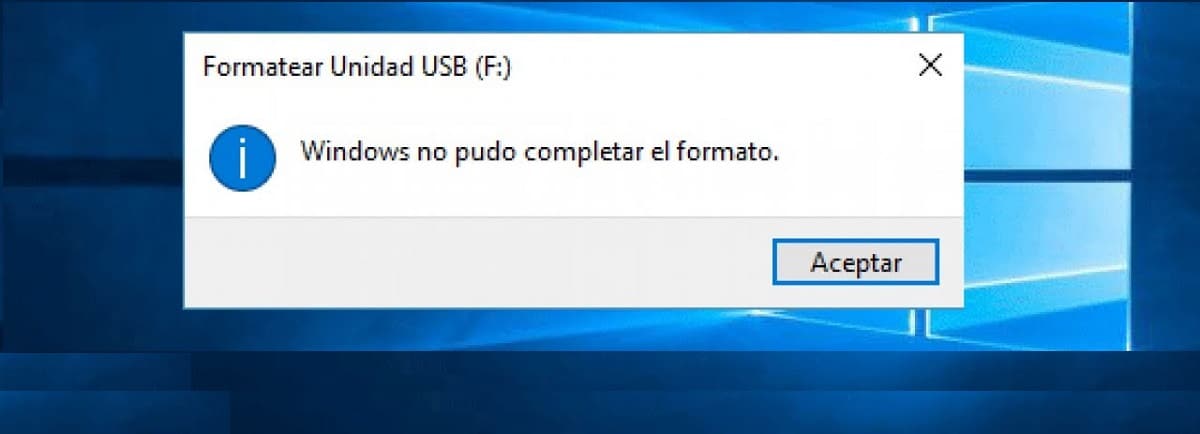
"Windows could not complete the format." This is a error well known to users when trying to format SD card, USB drive or external hard drive. If that is your case, this post will help you. In it we will analyze the causes that produce the error and the ways to solve it that we have.
This error is a major obstacle to format a removable disk, whatever it is: external hard drive, hard drive, SSD, a USB flash drive, SD card, pendrive or CD / DVD. Under normal circumstances, the process is relatively straightforward: for example, a USB memory stick is inserted into the PC and the message "Please format the disk to be able to use it" appears. One click would be enough to run it. But what if the message "Windows could not complete the format" suddenly appears on the screen? That tells us that something is not working properly.
Possible causes of the error

Possible causes of the "Windows could not complete the format" error.
The causes of the error "Windows could not complete the format" can be very varied. The most common reasons are the following:
The USB memory is damaged
The error comes from physical damage to the unit, either in its entirety or in some of its parts. This damage can make the drive inaccessible, so Windows will ask us to format it. Unfortunately, this repair is not usually simple or cheap, sometimes, directly impossible.
It may also happen that only some of the files on the drive are damaged. This can be due to various reasons, from excessive defragmentation or improper disconnection of the USB drive. A bad sector can affect the formatting operation.
Important: USB flash drives or memory cards are storage devices that make our lives easier. They allow us to save a large amount of data. In addition, they are very easy to transport and to use. At the same time, they are about very sensitive devices so it is essential to be very careful when using and storing them.
Drive is write protected
When this happens with a unit, It is impossible to format it, as Windows prevents us. The way to make sure that this protection needs to be removed is simple: just try to copy something and it will automatically get the message: 'The disk is write protected. Remove write protection or use another disk ».
To eliminate this protection there are several formulas. For example, you can use the regedit and ogpedit.msc tools from the system itself. However, these cases are really rare, so other solutions are worth trying.
Drive infected by a virus
This happens much more frequently than we imagine. It is quite common for a removable drive to change hands and end up plugged into several different computers. In fact, this is precisely what these devices were designed for.
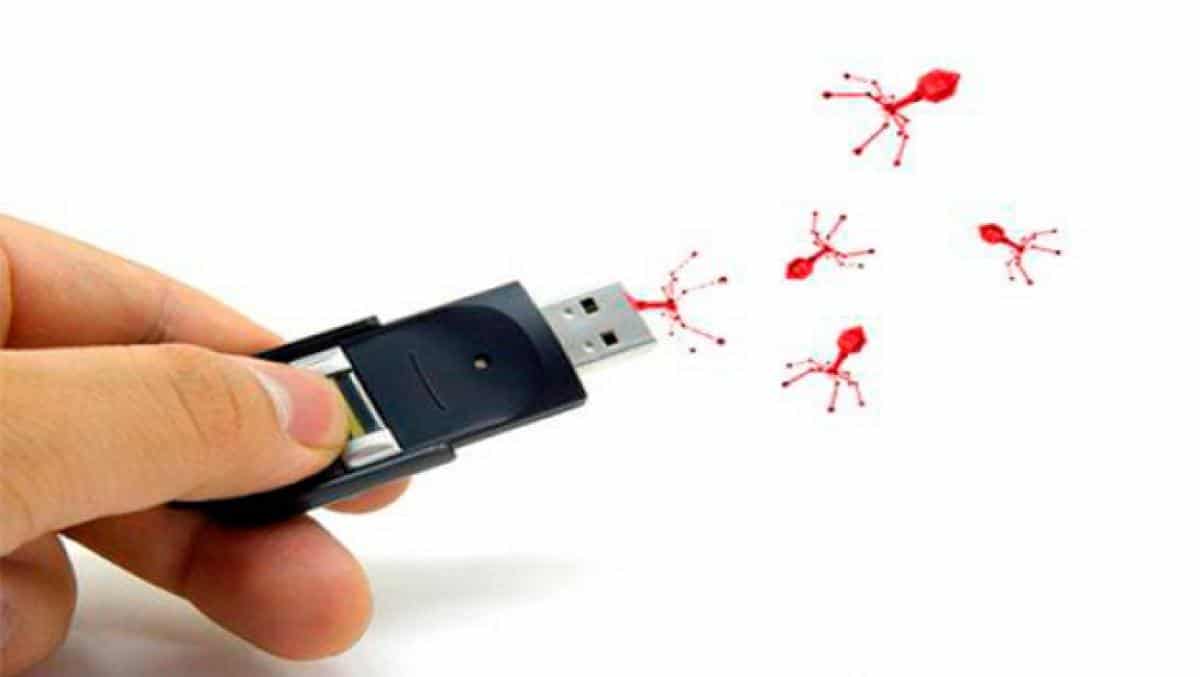
USB stick infected by a virus: It happens too often and it is something we must protect ourselves against.
But it is enough that one of these computers in which the USB is inserted is affected by a virus so that it infects the drive, causing all sorts of damage to it and ultimately preventing the formatting process.
Drive is empty
It seems like a no-brainer, but it's one of the reasons why I get the "Windows could not complete formatting" message. If there isn't one partition on hard drive, this operation will be impossible, although we can see that it is assigned a drive letter. But the formatting is based on partition, not unallocated space. So in these cases Windows will be unable to finish the formatting.
Solutions
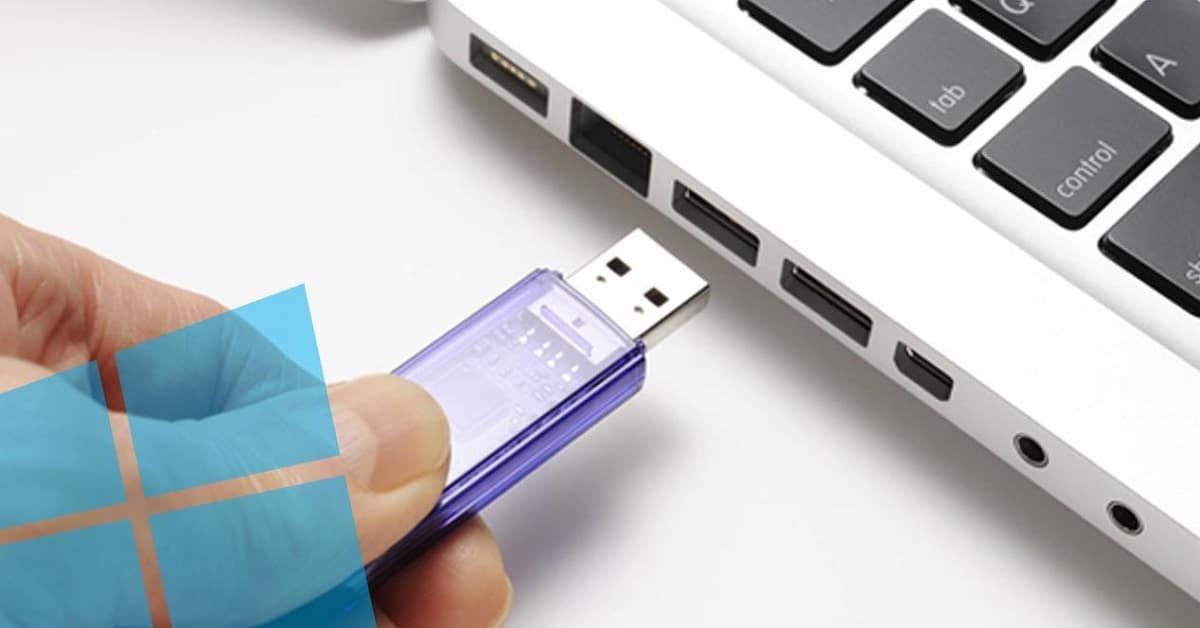
Solutions to format USB drives and access their content
Once the causes that may be the origin of the problem have been identified, it is time to solve it. Each of the solutions that we detail below correspond to each of the aforementioned problems.
Some of them are obvious, but necessary; others are somewhat more elaborate. The important thing is that they can all be very useful to us, depending on what the problem is. They are as follows:
Check the USB connection
As simple as that. Before we get nervous or start trying a more complex solution, we must rule out the most common and obvious causes. So one of the first things we need to do is make sure that there is no such thing as a basic connectivity problem. The connectors on the USB ports wear out with use, which affects their proper function.
How do we do it? Simply removing the storage drive from the connected USB port and try inserting it into a different port. It's even worth trying to connect on a different computer.
Update Windows
Almost as basic as the above. Many times USB drivers fail if they are not properly updated in the operating system. In that case, all it is easily solved if we update Windows.
To proceed with this update, all you have to do is write "Update" in the start menu and, in the results that appear, select the "search for updates" button. This will open the section Windows Update Configuration. Once there, click on "Check for updates" to complete the process.
(*) Sometimes the error occurs just the opposite, when a recent update is interfering with the proper functioning of our system. If so, try to locate the conflicting update and remove it.
Format USB manually
Already in its first versions, Windows implemented a very practical tool when managing the system's hard drives. With the Disk manager We can format the internal disk, create partitions, assign letters, etc. But it will also help us to do the same with external storage units connected to our equipment.
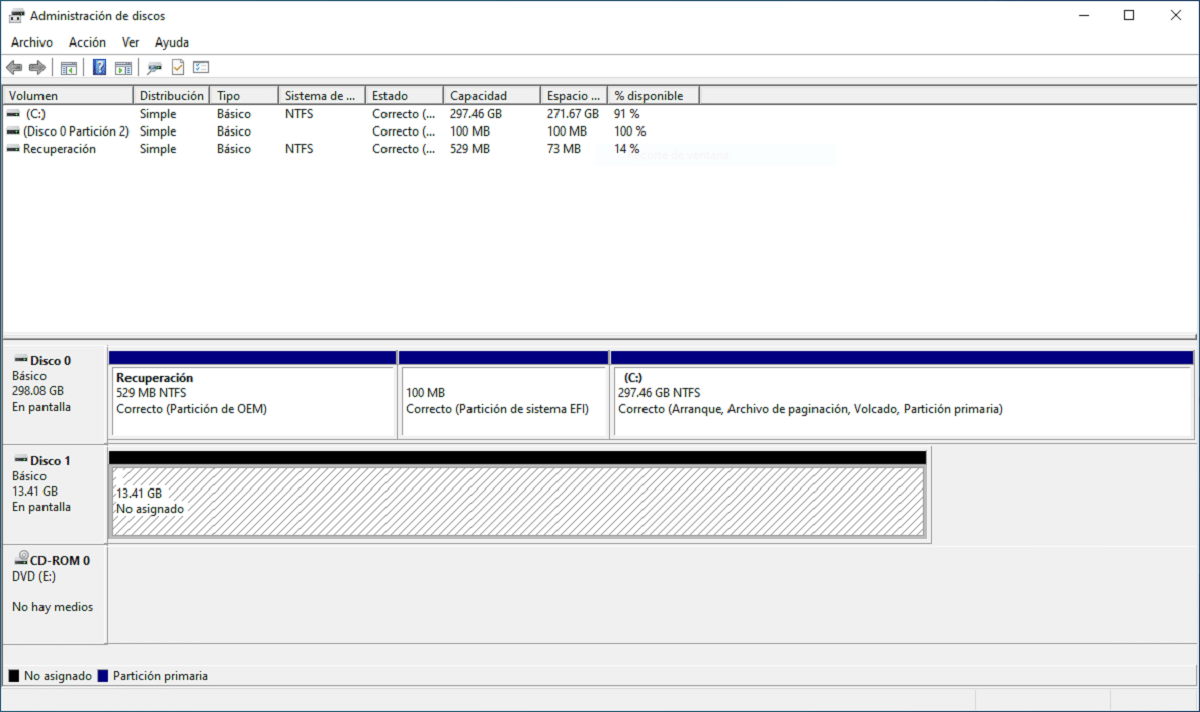
Format USB Manually Using Disk Manager
To carry out this operation and eliminate the annoying message "Windows could not complete the format", follow these steps:
- First we press the right button to open the "Start Menu".
- There we select the option Disk Management. With this we are shown the list of hard drives on our computer. At the bottom they are represented together with their partitions, names and letters.
- We select the unit on which we want to act and click with the right button to choose the option "Format".
- Then a window opens with a series of options. If the unit is internal we choose FAT32; if instead it is an external unit we choose NFTS.
Another way to manually format a USB is through the tool diskpart.
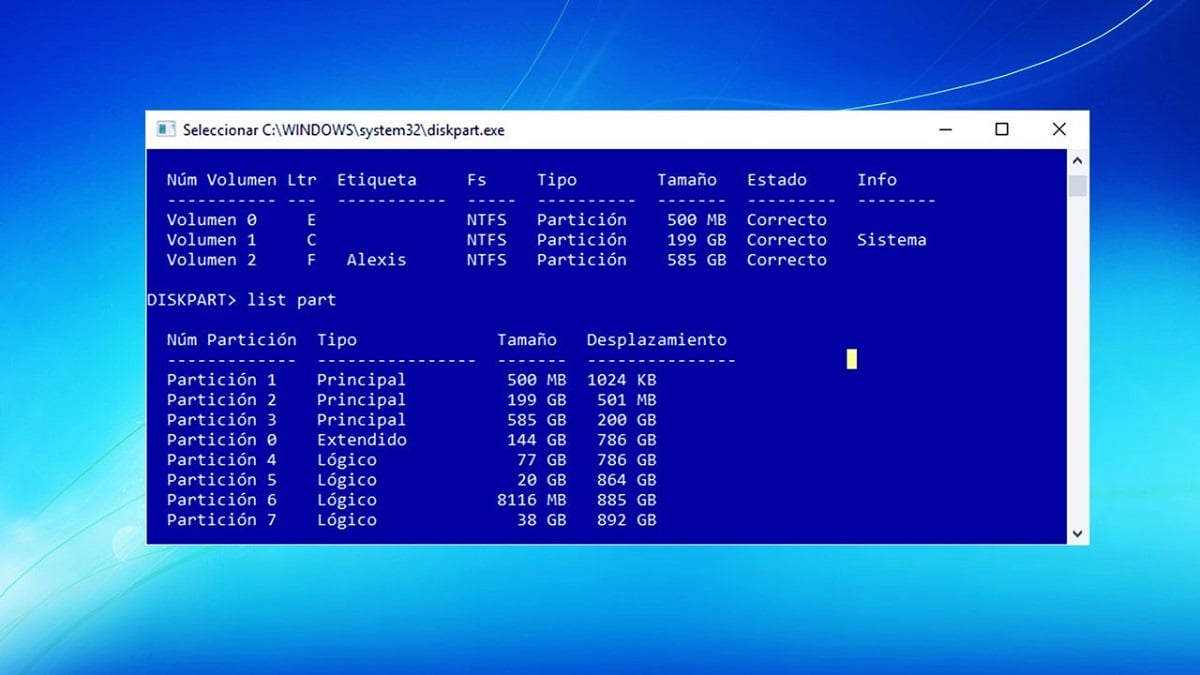
Format USB Manually Using Diskpart Tool
To format using Diskpart tool it is necessary to use PowerShell. We explain it step by step:
-
- As in the previous method, you have to press the right button to open the menu of Home. There we choose "Windows PowerShell (Administrator)".
- In the box, we write the command "diskpart" and press Enter.
- In order for the disks connected to our computer (both internal and external) to appear on the screen, we then enter the command List.
- As these units are numbered, you have to write the command "Select disk" followed by the number assigned to the unit we want to format.
- To delete everything we will use the command Clean.
- To make a partition we will write "Create partition primary" and we will select it with "Select partition 1".
- Finally you have to activate the partition using "Active" and assign it a letter, for example M for Movilfórum: "Assign letter = M".
By doing this we will have our USB drive or portable hard drive formatted and ready to be used.
How to save data from inaccessible memory?
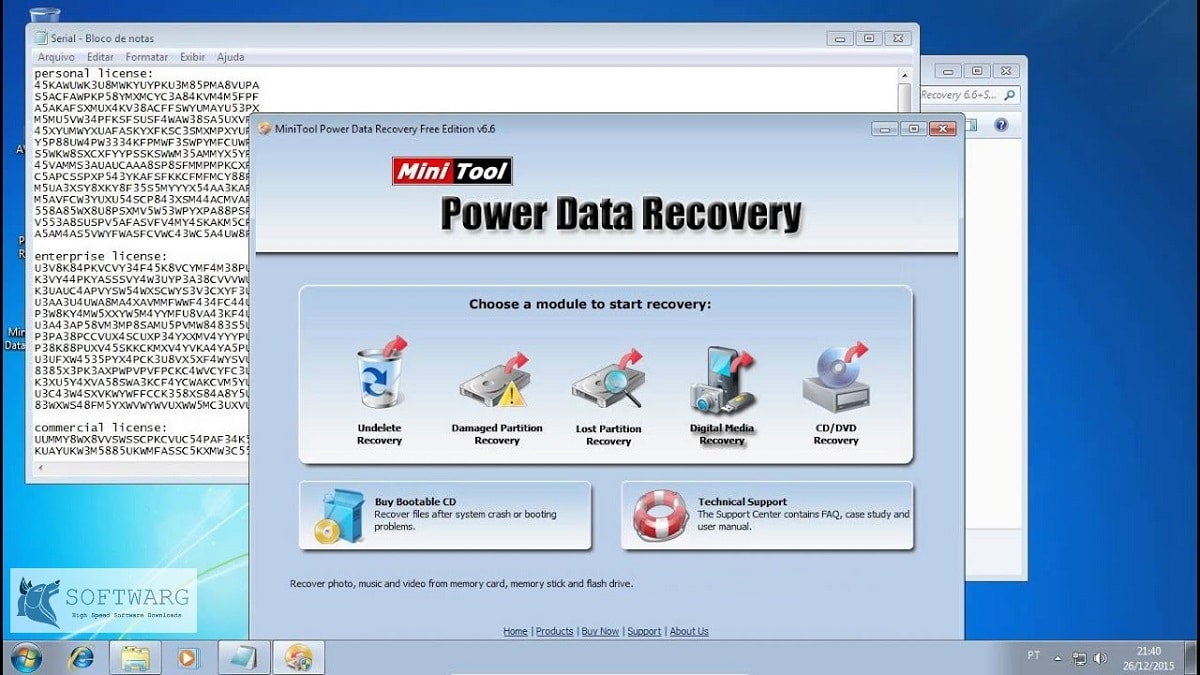
MiniTool Power Data Recovery, software specialized in data recovery
It is worth remembering that, when we format a disk drive, all the data it contains is deleted. As a precaution, before carrying out any operation it is advisable to make backup copies of important data. But then it pops up "Windows could not complete formatting" message. Then, How to save the data if we can't access the drive?
The only solution is to enlist the help of a data recovery software. One of the best is MiniTool Power Data Recovery, specially designed for Windows users. It can be downloaded at the following link: Mini Tool. Let's see how it works once installed on our computer:
- We select the USB drive and run MiniTool Partition Wizard using the option of "Recover data".
- Next we double-click on the partition of the USB drive in question to start the scanning. The scanning process allows us to select the files to be recovered as well as to choose a destination path.
The process may take more or less, depending on the number of files contained. It is highly recommended to do this type of recovery even if the memory units are accessible, just as a precaution.